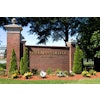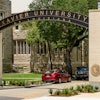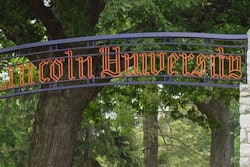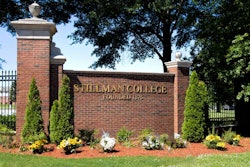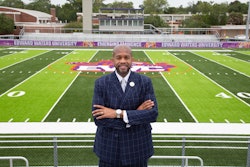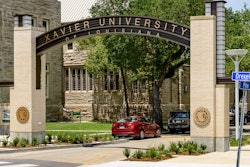WASHINGTON — Though it has been just two years since Dr. Lorenzo Esters joined the Association of Public and Land-Grant Universities, or APLU, his efforts to orchestrate new partners while forging coalitions appear to be yielding fruit. Esters is charged with representing the interests of 18 Black land-grant colleges and public Black colleges and universities.
“My advocacy for the public Black land-grant universities is primarily in the area of partnership-building with the federal, business and philanthropic community,” says Esters, vice president of the Office for Access and the Advancement of Public Black Universities at APLU. To help him open some of those doors while identifying dollars for the public institutions reeling in the wake of state budget shortfalls, Esters in April formed a nine-member advisory board of senior-level officials representing companies and institutions that include the Siemens Foundation, GEICO insurance, Educational Testing Service, AAA, Monsanto and even the NFL Players Association.
Even though APLU has plans for hefty initiatives such as focusing on diversity in global education, Esters still lists helping low-income and underrepresented students as priorities.
“It’s wondering about the future of minority and low-income students and whether we are prepared to serve these changing demographics,” says Esters. “We are losing so many students who are in the pipeline—students of color and low-income students who, number one, can’t afford it (higher education), and, number two, the system fails to reach them.”
That is where new initiatives aimed at ensuring college access for the nation’s low-income and underrepresented college students come in. Esters is counting on the leadership of the 1890 Black colleges and universities and minority-serving institutions, or MSIs, to embrace and help drive an ambitious agenda. An agenda, he adds, that also supports President Obama’s 2020 goal of increasing the number of Americans with college degrees. While the national graduation rate for all college students is about 56 percent, the college graduation rate for African-Americans is approximately 43 percent.
Although some people view land-grant institutions as higher education’s misunderstood underdogs for their roots in an 1890 congressional bill that made college accessible for Black students and agriculture pivotal to the schools’ mission, today’s “1890 land-grant universities are in a prime position to assist with President Obama’s charge to increase graduation rates and boost American higher education,” says Dr. JoAnn Haysbert, president of Langston University, an 1890 school in Langston, Okla.
Haysbert says too often the 1890s get overlooked for what they can offer to higher education beyond the study of agriculture and the environment. “We are that plus more,” adds Haysbert who touts the percentage of Langston’s science graduates who pursue advanced degrees and enter medical school. “About 80 percent in chemistry and about 66 percent in biology,” she says.

